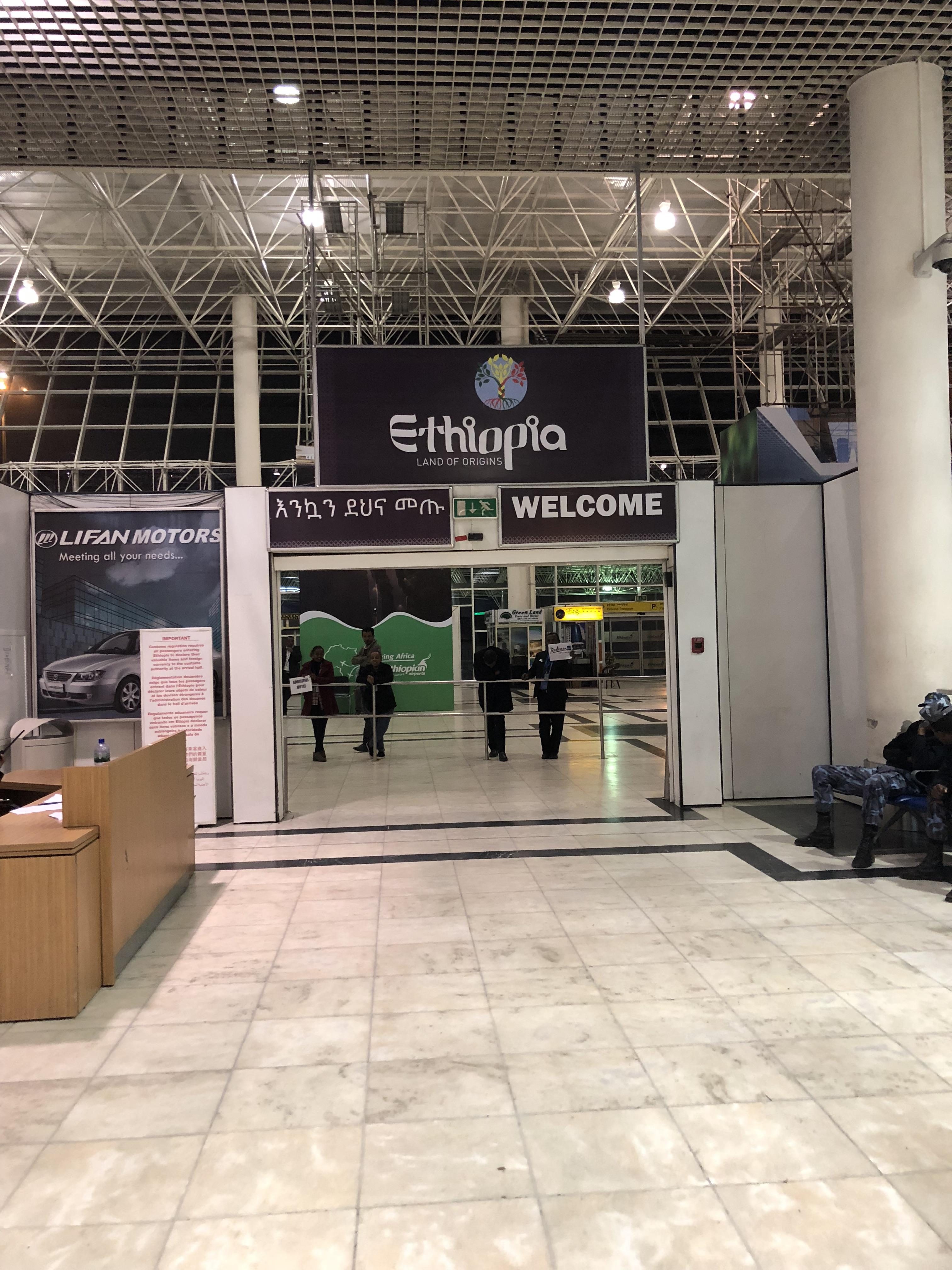Addis Ababa, Ethiopia – A Travel Blog
We were delighted to fly from Istanbul and to arrive at the airport in Addis Ababa. Ethiopia is truly the Land of Origins: of humanity, of language and of major parts of the Judeo-Christian tradition.
Historical note: Addis Ababa means ‘New Flower’ in Amharic and has been the political center of Ethiopia for only the past couple of hundred years out of a 3000-year history.
Linguistic note: The script on sign saying “Welcome” is Ge’ez. The working language of the country is Amharic, although people in Ethiopia speak up to 75 different language. The lettering used to write the Latin-alphabet version of the word ‘Ethiopia’ on the welcome sign is a modified Sabian script.
Addis Ababa: Origins of Humanity
If you go to Paris, you’re likely to want to go to the Louvre and see the Mona Lisa. If you go to Addis Ababa, you’ll want to go to the National Museum of Ethiopia:
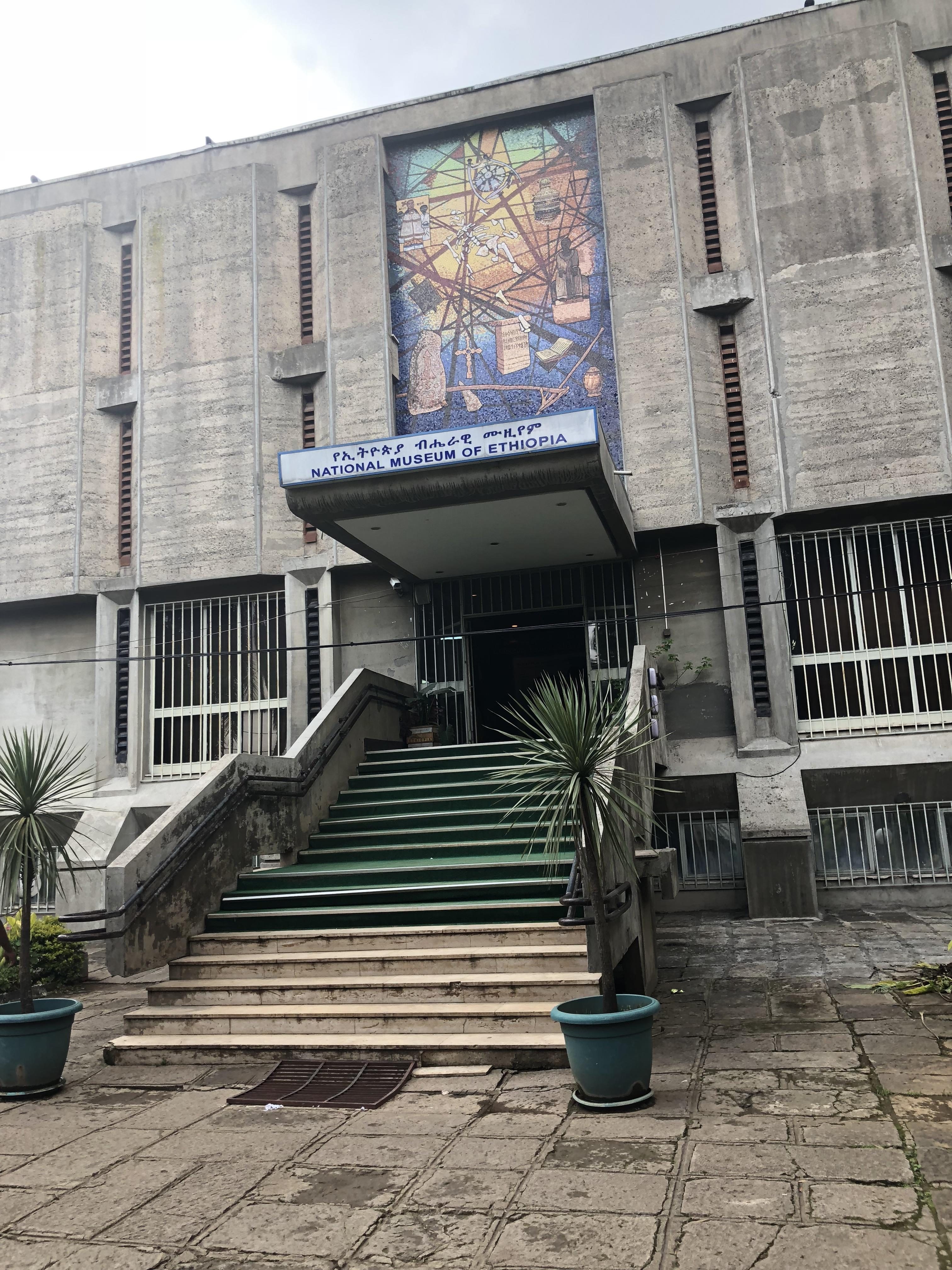
to see the skeleton of Lucy, the world’s most famous early human ancestor. Her remains are 3.2 million years old, and she is important because she walked upright.

Lucy’s bones were unearthed in 1974 by a team of paleobiologists that included Maurice Taieb, Donald Johnson, Mary Leakey and Yves Coppens. She is so named because the song “Lucy in the Sky with Diamonds” was playing repeatedly at the archeological site.
And here is our guide, Elias, next to a mockup of the full Lucy in order to show how short of stature she was:

By the way, outside the museum is this statue of the great Russian poet Alexander Pushkin, in honor of his grandmother who was Ethiopian, thereby adding her to the list of famous Ethiopians.

On this trip I became convinced that all roads lead to Ethiopia.
Nest door we ate at the Lucy Restaurant,

Phillip is being searched by the male guard. I’m going to be searched by the female guard on the left. Security is in place at all public places
where we had our first Ethiopian meal:

For those of you who frequent Ethiopian restaurants, you already know that all the food is served on ingira, a gluten-free, iron-rich, slightly spongey, sour-dough flatbread that you tear off and dip into the food with your fingers
and our first encounter with Ethiopia money:

The national currency is the birr, and our bill of 526.30 birr equals around $19
East Africa is birthplace of modern humans and, therefore, the birthplace of modern language.

If I am reading this map correctly, the blue lines map out the paths of mitochondrial DNA (maternal lines from “Eve”) while the yellows lines trace the Y-chromosome groups (paternal lines from “Adam”) around the world. So-called Adam and Eve did not live at the same time nor were they ever the only two humans on the planet. Rather it is to their genetic material that all modern humans can be traced.
Linguists, myself included, think that language reached it modern state of complexity anywhere from 250,000 – 100,000 BCE, that is, before the major expansion of humans Out of Africa.
Addis Ababa: The City
Addis Ababa is relatively new, with the usual steel-and-glass and concrete buildings downtown:
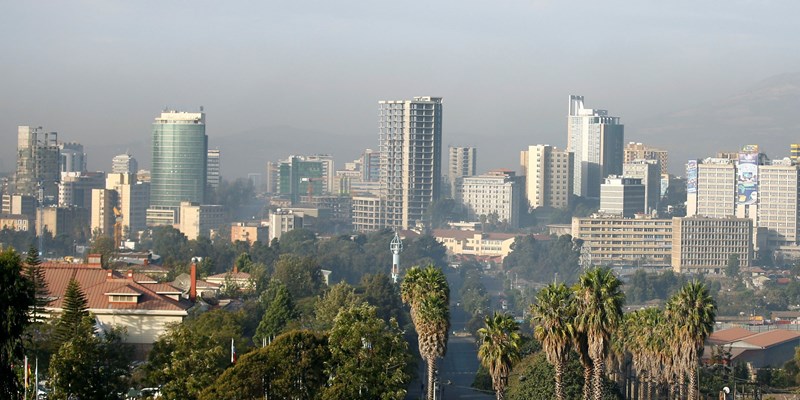
and the usual dusty jumble uptown:

I couldn’t get enough of taking pictures of the signs written in Ge’ez:

Here’s another!

Animals are part of the traffic, here a donkey carrying firewood:

You encounter on the road everywhere goats, cattle and donkeys.
Addis Ababa: The Christian Tradition
Christianity has been a part of Ethiopia since the 4th c AD. The founding church of Addis Ababa, St Mary’s, is on top of a hill overlooking the town.
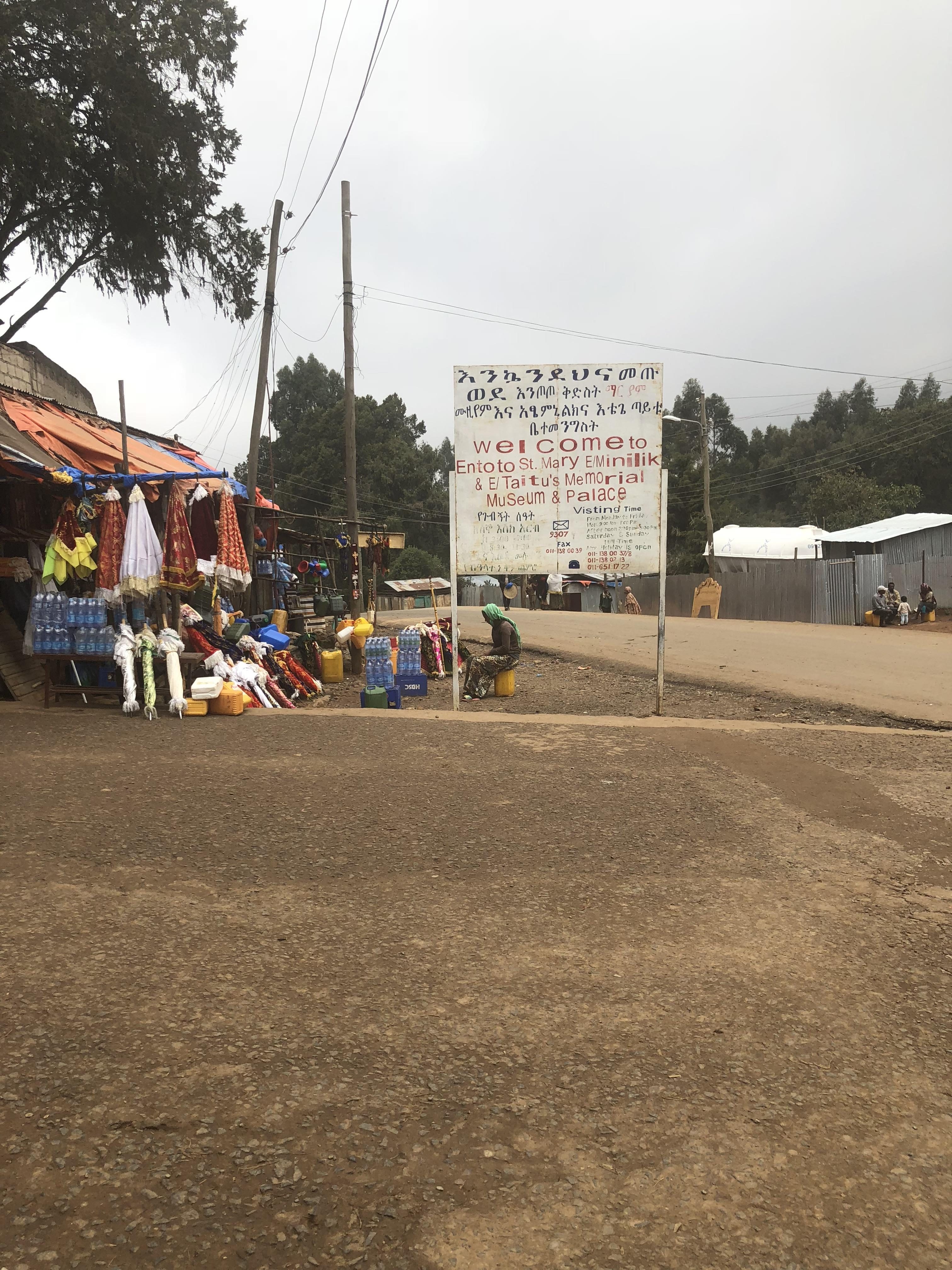
It’s a typical Ethiopian church, in that’s it’s round to symbolize unity.

Actually, St. Mary’s is an octagon
Churches have the three roofs, as you see here, and they are painted green, yellow and red to symbolize Ethiopia. Although you can’t see the colors on the roofs of St. Mary’s, you can see them on the fencing to the left.
St. Mary’s doubles as monastery and was the historic lodgings of the founders of Addis Ababa. All structures are round:

The drying peppers made a colorful photo:
We ended the tour of the city with a stop at the more European-looking Holy Trinity Cathedral:
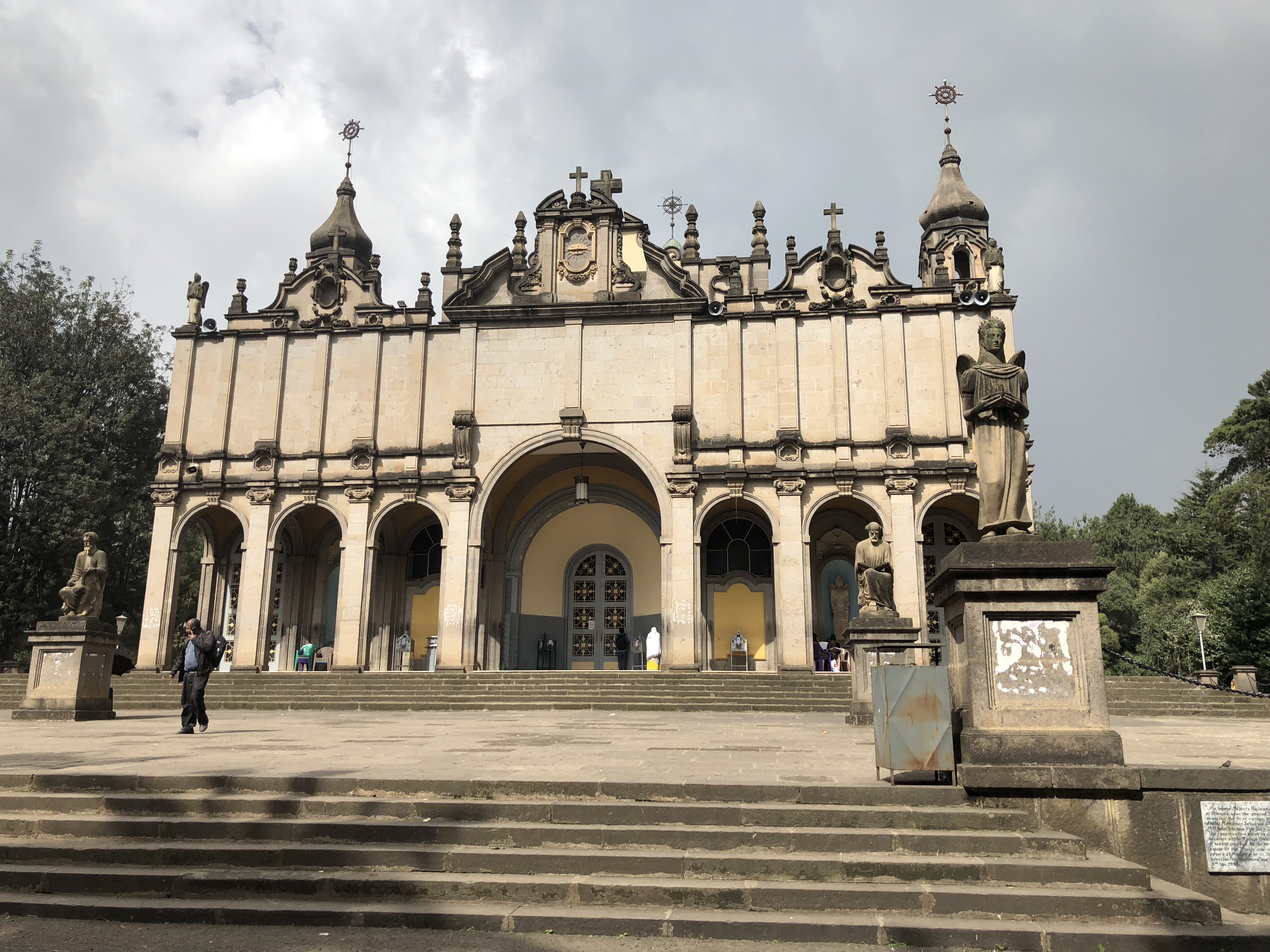
and saw the tomb of Haile Selassie.

More on Haile Selassie and his towering importance in Ethiopian history in the next blog.
See: All Africa Blogs
Categorised in: Adventure, Africa
This post was written by Julie Tetel Andresen
You may also like these stories:
- google+
- comment
